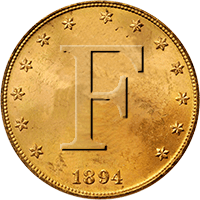Even though detectors have been around since the 1930s (and even earlier), yet all the early decade's machines were only capable of finding large sized objects. Not coin sized objects.
So for example, even though Fisher Co. perpetually touts that they've been around since the mid 1930s, that was all just 2-box style. And even to the extent that they had some conventional rod-&-loop styles by the late 1950s (?), yet even those would have been hard-pressed to find coin-sized targets.
So all the early kinds might have been fine for finding land-mines or caches, or industrial/commercial purposes (eg.: hubcap and jar and pipe sized items), yet were not sensitive enough to find coin-sized items.
When did that change ? What were the first machines (in common use that is, not fluke experimentals) that could do it ?
I read somewhere that there was a certain mine detector that came out during the Korean conflict (very early '50s) that was indeed capable of finding coins. Like to get a quarter at a good 6" or something (albeit probably a bear to keep balanced). And even though it wasn't designed for that purpose, yet it was capable of doing it, if someone had wanted.
But barring a few fluke stories like that, you really don't see the hobby of hunting for individual coins taking off till the early 1960s. And even then-so, very geographically limited. Entire areas of the USA never saw a detector in their parks and schools till the late 1960s or early 1970s.
So what is the earliest accounts of coin-hunting that you've heard of ? And what machines were they using ? And what were they capable of ?
Here in CA, I talked to a guy who had graduated from High School, in Napa, CA, in 1959. He distinctly recalled seeing a fellow with a metal detector in one of the old parks there. And distinctly recalled that he was still in High school at the time (hence it was '58 or '59-ish). He stopped and watched the fellow for a bit. And distinctly recalled that he was digging coins (ie.: not just big targets). He could not recall what machine the guy was swinging though. Years later, in the late 1960s, or early '70s, he recalled that encounter, and went to get a machine of his own.
So for example, even though Fisher Co. perpetually touts that they've been around since the mid 1930s, that was all just 2-box style. And even to the extent that they had some conventional rod-&-loop styles by the late 1950s (?), yet even those would have been hard-pressed to find coin-sized targets.
So all the early kinds might have been fine for finding land-mines or caches, or industrial/commercial purposes (eg.: hubcap and jar and pipe sized items), yet were not sensitive enough to find coin-sized items.
When did that change ? What were the first machines (in common use that is, not fluke experimentals) that could do it ?
I read somewhere that there was a certain mine detector that came out during the Korean conflict (very early '50s) that was indeed capable of finding coins. Like to get a quarter at a good 6" or something (albeit probably a bear to keep balanced). And even though it wasn't designed for that purpose, yet it was capable of doing it, if someone had wanted.
But barring a few fluke stories like that, you really don't see the hobby of hunting for individual coins taking off till the early 1960s. And even then-so, very geographically limited. Entire areas of the USA never saw a detector in their parks and schools till the late 1960s or early 1970s.
So what is the earliest accounts of coin-hunting that you've heard of ? And what machines were they using ? And what were they capable of ?
Here in CA, I talked to a guy who had graduated from High School, in Napa, CA, in 1959. He distinctly recalled seeing a fellow with a metal detector in one of the old parks there. And distinctly recalled that he was still in High school at the time (hence it was '58 or '59-ish). He stopped and watched the fellow for a bit. And distinctly recalled that he was digging coins (ie.: not just big targets). He could not recall what machine the guy was swinging though. Years later, in the late 1960s, or early '70s, he recalled that encounter, and went to get a machine of his own.

